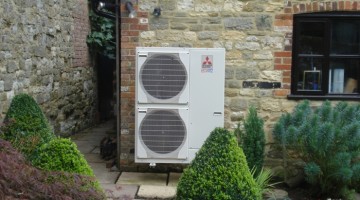
The RHI is available for several types of heating system. The question we sometimes hear is, can you combine 2 heating systems and still get your RHI payments? The short answer to this is yes, but let’s go into a bit more detail to show you just how it works.
It is not unusual to have 2 heating systems in a property. Sometimes an oil boiler is left over as a backup, whilst sometimes a larger property has 2 heating systems with half heated with one system and the other half heated with another. This can raise some questions as to how the RHI works in these situations.
Example 1 – Heat Pump/Biomass and oil/gas central heating.
If you have a central heating system run by 2 different heating sources, you can still claim the RHI. The catch is that your RHI qualifying system will need to be metered, and your payment will be proportional to the amount of heating your renewable actually does in the home. The meter is very complex, taking into account several different factors that contribute to the efficiency and use of the heating, and it should give a very fair and accurate figure that will be used for your RHI payment.
How Does Metering work?
You will get an extra payment to cover the cost of the metering, but unless you have to it is never worth getting a meter installed. This is because the total amount you can claim with a meter is capped at the amount you would get if a meter wasn’t present (i.e. the heat demand on your EPC)
 Example 2 – Solar Thermal and Heat Pump/Biomass
Example 2 – Solar Thermal and Heat Pump/Biomass
As long as your solar thermal is for water heating only, you won’t need a meter installed if you are claiming RHI for both the solar thermal and another heating system. This is because the two systems are independent and shouldn’t impact on each other.
The solar thermal payment is based on the water heating demand on the EPC, whereas the biomass or heat pump is based on the heat demand figure on the EPC.
One little note for your information. If you are using two different heat sources to heat a cylinder, you are going to need two heating coils in your cylinder. This is because each heat source works at different temperatures and will need a different amount of surface area to heat the water in the cylinder.













No Comments yet! Be the first one.